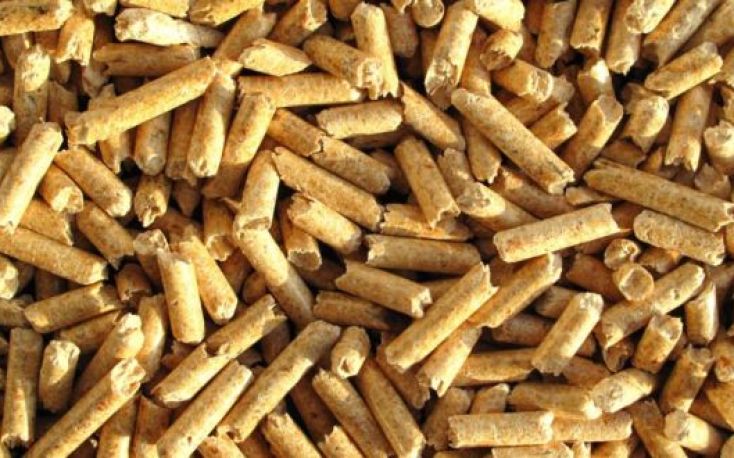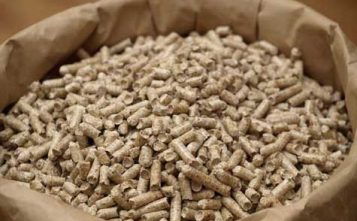The EU is the world’s largest wood pellet market, with consumption of about 22.7 MMT (million metric tonnes) of wood pellets in 2017. Based on the European Commission (EC) mandates and Member State (MS) incentives, the demand is expected to expand further to about 24 MMT in 2018. Future consumption will significantly depend on a range of market factors and EU Member State incentives and conditions.
While the EU produces about fifty percent of world production, EU demand represents about 75 percent of the market. In 2017, total EU consumption was about 22.7 MMT. In 2016, 43 percent was used residential heating, 35 percent for commercial power, 12 percent for commercial heating and 11 percent for combined heat and power (Source: AEBIOM). The major users of wood pellets in the EU are the United Kingdom, Italy, Denmark, Germany, Sweden, Belgium, France and Austria.
Residential Use of Pellets
Residential use for heating, about 45 percent of the total pellet market, fluctuates annually but is a relatively stable market compared to industrial heat and power generation. The demand depends on the winter temperatures and fossil fuel prices. The past two winters of 2016/2017 and 2017/2018 were relatively colder than the preceding four winters which is expected to have supported the use of wood pellets for residential heating. Medium-size use of pellets for energy generation by industries or public buildings such as hospitals and swimming pools is generally less dependent on weather conditions.
In Italy, Germany, France and Austria pellets are mainly used in small-scale private residential and medium-sized industrial boilers for heating. In some EU Member States, such as Sweden, Germany, Austria, France and Spain, household heating with biomass as input receives subsidies or tax deductions by the federal and local governments. In most countries, however, government funding is limited.
Italy is forecast to be the largest European market for the household use of pellets. According to the National Renewable Energy Action Plan statement, the use of pellets is expected to increase to 5 MMT in 2020. However, only 15 percent of the demand is met by domestic production, with the remaining 85 percent being covered by increasing imports.
Bagged pellets represents almost the total market. The pellets are mainly distributed through retail shops, hardware stores and fossil fuel suppliers. Currently, Italy sources pellets mainly from Austria, Germany, and Croatia. Imports from the United States fell from 180,000 MT in 2014 to 20,000 MT in 2016, due in part to a warm winter and the higher price of U.S. wood pellets over European competitors. In 2017, imports from the United States recovered to 40,000 MT. Market logistics and economics indicate that in the near future imports from North America will expand further.
The vast majority of wood pellets in Germany are used for heating, because the government does not financially support the use of wood for electricity generation. German law mandates that all buildings erected in or after 2009 have to use a certain share of renewable energy to satisfy their heating and cooling requirements. Wood pellets are one of the options. The replacement of heating systems with wood pellet ovens is subsidized.
Around 70 percent of total French consumption of wood pellets is used in individual residential heating systems. A minor use of wood pellets is collective residential heating.
However, the share of industry and of collective residential heating has increased since 2005 and is expected to continue to increase in the future as a result of incentive policies.
In Austria, wood pellets are mainly and increasingly used in household heating systems which receive subsidies by the federal government, the state governments and the communities.
In the Czech Republic the number of pellet heaters is still relatively low. The situation might change soon though, because there is a subsidy program aimed at elimination of old heaters with high emissions. Citizens who decide to buy a new pellet heater can apply for a “heater subsidy” that can cover up to 85 percent of the price of the new heater.
Another relatively small market with growth potential is Greece. The current pellet market is estimated at 40,000 MT.
Industrial Use of Pellets
Demand for industrial pellets depends primarily on EU MS mandates and incentives, which accessibility in some EU Member States, such as the Netherlands, has been uncertain or put on hold. In the industrial market most pellets are used for power generation. In markets such as the
United Kingdom, Belgium, and the Netherlands residential use is negligible and the demand is dominated by large scale power plants. The large scale use of wood pellets by power plants is driven by the EU mandates for renewable energy use in 2020. The governments of these countries opted to fulfill their obligations mainly by the use of biomass for the generation of electricity. As these countries lack a sufficient domestic production of pellets they largely dependent on imports.
The conversion of large electricity plants to fire on biomass instead of coal is a key factor in the UK Government’s plans to reach renewable energy targets. The main support mechanism within the UK’s energy policy that has enabled the conversions is under the Levy Control Framework and called ‘Contracts for Difference’. This involves the government paying a premium above the market price of the electricity generated by the biomass power plant. Th
e largest user of pellets in the United Kingdom is converting the fourth unit of their plant from coal to biomass combustion. This unit is anticipated to be finished in August 2018. Each of these four units combust 2.3 MMT of wood pellets per year. Actual wood pellet consumption of this power company was about 7.4 MMT, of which 62 percent was sourced from the United States. The second largest user started their operations in May 2018. At full capacity the power generation of this plant will utilize about 1.4 MMT of pellets, of which at least 800,000 MT is expected to be sourced from U.S. suppliers. For 2018, the total use of pellets in the United Kingdom is forecast at 8.0 MMT.
Sweden and Denmark have a high target for renewable energy use in 2020, 49 and 30 percent respectively. Both goals have already been reached, with a major part obtained from biomass. In Sweden pellet consumption declined during the past four years. Explanations are relatively warm winters and the declining prices of fossil inputs. During 2012 – 2016, Danish consumption of pellets stagnated around 2.1 MMT but as another combined heat and power (CHP) plant has been converted to using pellets, use is expected to have grown sig
nificantly in 2017. Danish pellet imports jumped from 2.0 MMT in 2016 to 3.1 MMT in 2017. The pellets were mainly sourced from the Baltic Region (1.7 MMT), Russia (0.4 MMT) and the United States (0.3 MMT). Finland has a target of 38 percent for renewable energy use in 2020. A large share is covered by the use of wood chips, but only a limited portion is wood pellets.
Current Belgian industrial use is estimated at about 1.3 MMT per year. Of this, some 1.2 MMT is used for electricity production to the grid, while small private units are operated in the agricultural and other industry sectors for heating purposes.
Also in France, there is a potential for industrial use of pellets. In October 2016, the French new Multi-Year Energy Plan entered into force. The objective is to increase the power generation capacity from wood from 540 MW in 2018 to 790-1,040 MW in 2023. The development of renewable energy power is supported by two complementary systems: feed-in tariffs and tenders. In 2016, imports of pellets from the United States were high because of a single new biomass plant. However, the objective of this plant is to use 100 percent of local pellets in 2019, and as a result, imports from the United States fell in 2017. Local wood is favored in subsidized facilities.
In the Netherlands, demand for industrial pellets has been uncertain due to stringent Dutch sustainability requirements. In the Dutch Energy Accord co-firing of biomass is capped annually at about 3.5 MMT of wood pellets. In the Accord it w
as furthermore decided that biomass will be subject to specific sustainability criteria (for more information see Pellet Sustainability Criteria). Since the last quarter of 2017, Dutch imports of pellets slightly recovered. A major part of these pellets is reportedly made of saw dust due to the less stringent sustainability requirements for pellets made of wood waste. The pellets are sourced from a wide range of European sources with Portugal, the Baltic Region and Russia as the main suppliers. Dutch consumption of wood pellets is forecast at 0.5 MMT in 2018. Apart from the Dutch power sector, the Dutch chemical sector is planning to use wood pellets on the longer term.
Besides Western Europe, in Central Europe the use of biomass for power generation is also growing. In Hungary, many previously coal-fired power and heating plants began to use renewable energy sources instead of fossil fuels. This is supported by subsidies for electricity production with biomass utilization. At the same time, Hungary's National Renewable Energy Action Plan prefers more efficient and smaller heating centers that are close to biomass sources and can meet the local energy or heating demand.
Besides wood pellets, large quantities of wood chips and briquettes are used. The EU sector estimates the current EU consumption of wood chips at 15-20 MMT and expects it to grow to 28 MMT in 2020. Growth in demand is supported by increased investments in medium sized combined heat and power (CHP) plants. The main wood chips con
suming EU MSs are: Germany, Finland, France, Sweden and Poland. Most chips are sourced locally, but Scandinavia is regarded as a potential growth market for imports from non-EU destinations.





Leave a Reply